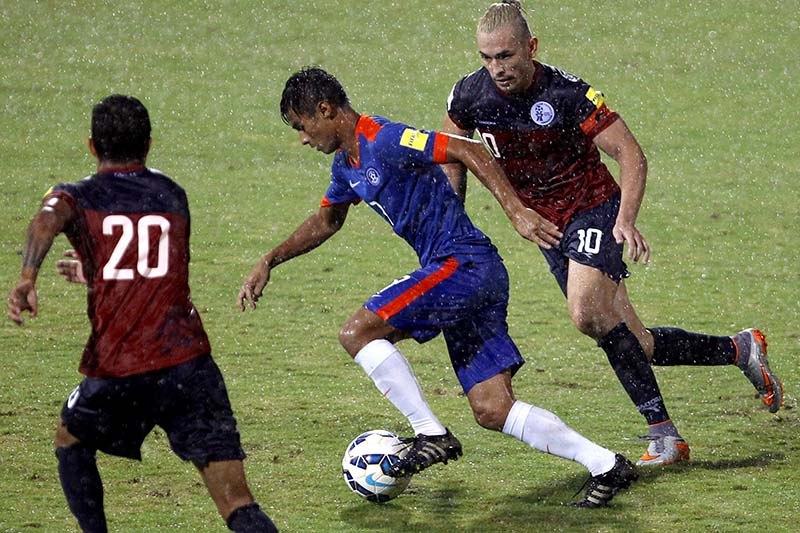For Guam, skipping the 2019 Asian Cup is a lost opportunity
Less than two years after the team from tiny Guam drew international attention in the qualifying tournament for the 2018 World Cup, the football story in the northern Pacific island has turned to one of broken dreams.
Prior to June 2015, the United States territory, which joined FIFA only in 1996, had lost its only two World Cup qualifiers with a combined score of 35-0.
Then, with the space of five days, Guam beat Turkmenistan and India to temporarily top an Asian qualifying group containing Iran and Oman and jumped to No. 146 in FIFA's rankings, its highest ever place.
The results also earned Guam - for the first time - a spot in the final round of qualification for the Asian Cup, to be held in 2019. But that opportunity is gone.
Guam Football Associated chief executive Richard Lai last month blamed a lack of funding when he announced the decision to withdraw from the continental tournament.
So when the draw was made last week, Nepal slotted into Guam's allocated spot and ended up in Group F with Philippines, Tajikistan and Yemen. The winners and runners-up in all six groups will advance to the AFC Cup in the United Arab Emirates in 2019.
The decision to withdraw from the qualifying generated backlash from players and fans, but Lai told The Associated Press that it would cost around $1.2 million to compete in the six qualifying games and "We just don't have the money."
He said many of the players are based in the United States and the cost of flying them into and out of Guam and setting up training camps drives up the costs for an FA with little sponsorship, broadcasting revenue or government support.
"There is no sports ministry here to support the team (and) every NGO here has to be self-sustaining," Lai said. "The FIFA grants come with conditions regarding women's football and youth football and facilities. We can't keep investing all we have in the national team only."
The federation said it plans to focus on Guam's youngsters in the hope it will pay dividends in the future.
"We can develop more and better players, help more go to the US and improve then we can play friendlies against teams like Thailand and Singapore and start generating revenue," Lai said.
Jason Cunliffe, who was captain of the national team, said he was upset when he found out through the media that Guam had withdrawn from the Asian Cup.
"The money is there. I think maybe not all of it was there immediately but there was a way," he said. "We've known since March that we had reached this stage of qualification and we were told to prepare. There has been no effort from the GFA to raise funds."
Lai "and everyone else have done a good job in the past but we can't rest on our laurels," he said. "We no longer have faith in the decision-makers."
Gary White, was the Guam coach in 2015 before leaving in 2016 to take over Chinese club Shanghai Shenxin, said the success came from administrators and players "pulling together."
"I had support from the federation and the commitment from the players." White said. "There is enough leadership both in the GFA and among the players that they will get back on track."
For Lai, the last World Cup campaign was a special situation for the island of 165,000 people.
"We wanted to see were we stood, to measure our development 20 years after joining FIFA," he said. "What we achieved was phenomenal but now we have no savings. Withdrawing was a hard decision but was really our only option - better to withdraw before the start than halfway through."
Cunliffe believes his squad could have finished in the top two in qualifying and reached the Asian Cup for the first time.
"The opportunity was there to put our island on the map," he said. "But that opportunity that the players gave everything to earn has been taken away. Not by someone else but by our own federation and that is hard for us to swallow."






